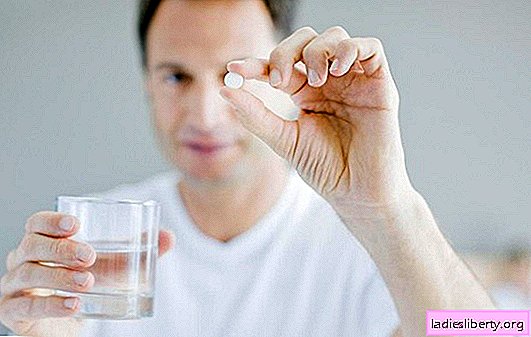
One of the most common dental pathologies that occur in patients of any age and social status is carious damage to tooth enamel. This disease progresses quickly enough and complicated caries can develop from a stage of a carious spot in a short period of time. This can be prevented if you know the main causes of caries.
Causes of caries: the basic concept, classification and etiology of the disease
Caries is a rather slowly developing pathology associated with the primary destruction of enamel, which occurs as a result of a rapid decrease in the level of acidity below indicator 5. In this case, damage to the integrity of the tooth surfaces and carious cavities form.
The development of this disease provokes a violation of the acid-base balance in the oral cavity and on the dentin of the surface of the dentition. This occurs as a result of glycolysis of carbohydrates. It is provoked by the vital activity of microorganisms and the formation of organic substances exhibiting acidic properties.
The following main factors contribute to the development of the focus of demineralization:
• Caries susceptibility of tooth enamel and hard teeth. Its degree of destruction is affected by the anatomical structure of the dentition, the enamel fluoride saturation on the teeth, the quality of oral hygiene, the amount and quality of saliva, heredity, and general health.
• Cariogenic bacteria. The oral cavity contains a mass of bacteria that do not parasitize in a normal environment. But, acid-forming bacteria of the Streptococcus genus, characterized by anaerobic fermentation and lactobacilli, take part in the formation of plaque.
• Fermentable carbohydrates. The activity of carbohydrate fermentation in plaque on teeth directly depends on their quantity and quality. The most active: sucrose, glucose, fructose. Less active are characterized by: minnit, sorbitol, xylitol.
• Period. As a result of food intake, microorganisms provoke the formation of acids that destroy teeth. With prolonged and frequent use of carbohydrates, the acidity of saliva becomes low, saliva does not have time to restore pH, which contributes to the emergence of an irreversible process of destruction of tooth enamel. The rate of development of carious lesions depends on many factors and can last from several months immediately after teething, and up to 4-5 years.
Causes of caries: the main factors determining a predisposition to pathology
• The development of carious lesions depends on many factors that, in parallel with the main causes, stimulate and accelerate the process of demineralization of tooth enamel. In dental practice, the following fundamental points are highlighted:
• The geographical location of the person. This is due to climatic conditions, the amount and type of precipitation, the concentration in the earth, air and water of various minerals. For example, a normal amount of fluoride in drinking water will provide reliable resistance of tooth enamel from damage. But, in case of excessive content of this microelement, fluorosis develops, which is characterized by a change in color and the manifestation of defects on the teeth.
• Professional defeat. The development of caries is more susceptible to people who work in hazardous industries associated with the production of acids, alkalis, and so on. Another factor in the progression of caries is an unstable psycho-emotional state, which is associated with the experience of stressful situations in professional activity.
• Age. According to statistics, caries begins to progress from the age of two to 12 years. During this time period, activity reaches 70%. Further, by the age of 45, there is a significant decrease in the progression of this pathology.
• Sexual predisposition. The female sex is more prone to the formation of carious lesions than the male. This can be explained from the point of view of physiological processes occurring in a woman’s body during lactation and gestation of the fetus. During this period, the female body experiences a global loss of trace elements and vitamins, which even due to the use of vitamin complexes cannot be uniformly replenished.
Causes of caries: risk groups
Factors that provoke the destruction of bone tissue and tooth enamel are cariogenic, and are classified into general and local. Common include:
• Defective and unbalanced diet, as well as poor quality of drinking water. The daily menu should include meat and dairy products, meat dishes, fresh vegetables and fruits. Limited intake of carbohydrate-containing products will reduce the likelihood of a favorable environment for the development of pathogenic microbes in the oral cavity.
• The presence of chronic pathologies in various systems of the human body. If endocrine, digestive, cardiovascular or immune systems suffer from dysfunctions, the degree of development of caries increases.
• Heredity. This is the usefulness of the structure of tooth enamel and dentin, as well as their resistance to the influence of negative environments.
• Stressful and depressive states, as well as other effects of extreme psychological stress.
In addition to general, there are local factors that provoke the progression of the causes of caries. In modern dentistry, the following categories are defined:
- Dental pathologies in the form of plaques, plaque, stones, which concentrate a lot of streptococci and actinomycetes. Contributes to this process non-observance of personal hygiene.
- Dysfunction of salivation. With the normal functioning of the salivary glands, they produce about two liters of saliva per day, which helps to not only neutralize food debris from the surface of the dentition, but also the acids produced by microorganisms. With a decrease in the amount of its production, the likelihood of developing caries increases.
- Anatomical pathologies in the structure and structure of tooth enamel, as well as the condition of loose, fibrous connective tissue that fills the cavity of the tooth. In the case of her disease, dysfunction of replacement dentin production occurs, which ensures rapid restoration of bone tissue. Also an important factor determining the risk group is the presence of an abnormal bite, prosthetics of the dentition, bracket systems.
- Poor oral hygiene. Food residues between the teeth and increased acidity in the mouth are the most favorable environment for the development of cariogenic microorganisms.
Prevention of Causes of Caries
In order to minimize the likelihood of developing carious injuries, the following preventive measures should be systematically carried out:
• Daily thorough morning brushing and immediately before going to bed.
• After each meal, rinse the oral cavity with special dental products to a minimum, and ideally it is always recommended to brush your teeth with toothpaste.
• During brushing, special attention should be paid to the gaps between them. To do this, it is recommended to use dental floss, irrigators, interdental brush.
• Proper nutrition, which consists of eating various foods, including nutrients, vitamins, and macro and micronutrients.
• Limit, and ideally completely exclude from the diet, foods containing a large amount of carbohydrates. Particularly dangerous food products for tooth enamel: sweet carbonated drinks, sweets and flour.
• Once every six months, it is recommended to carry out professional brushing.
• Systematic consultation of dentists every quarter.
• Exclusively as prescribed by a doctor, to strengthen tooth enamel, it is possible to apply special sealant and take medications to increase the amount of fluoride in the body.
• In case of clinical need in dental clinics, a special procedure for fluoridation of the dentition is performed. Under the influence of fluoride ions, tooth enamel is restored.
Adhering to the basic rules for the prevention of caries, you can avoid the development of this dental pathology. In this case, the likelihood of caries causes that provoke its formation is minimized. It is worth remembering that this disease is easier to prevent than to undergo treatment, which in addition to pain and aesthetic problems, involves significant financial costs.
Take care of your teeth and then the smile on your face will be beautiful and healthy!











